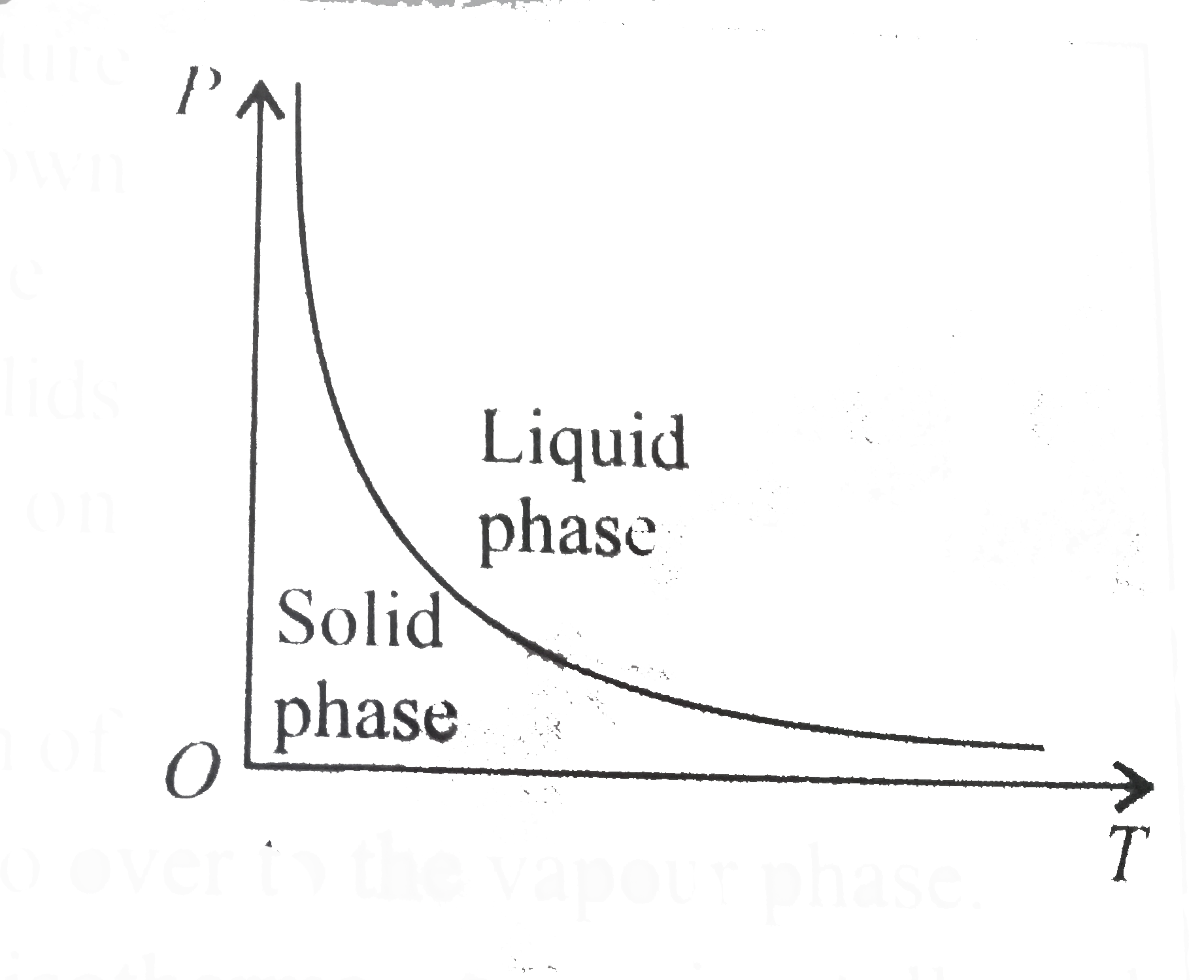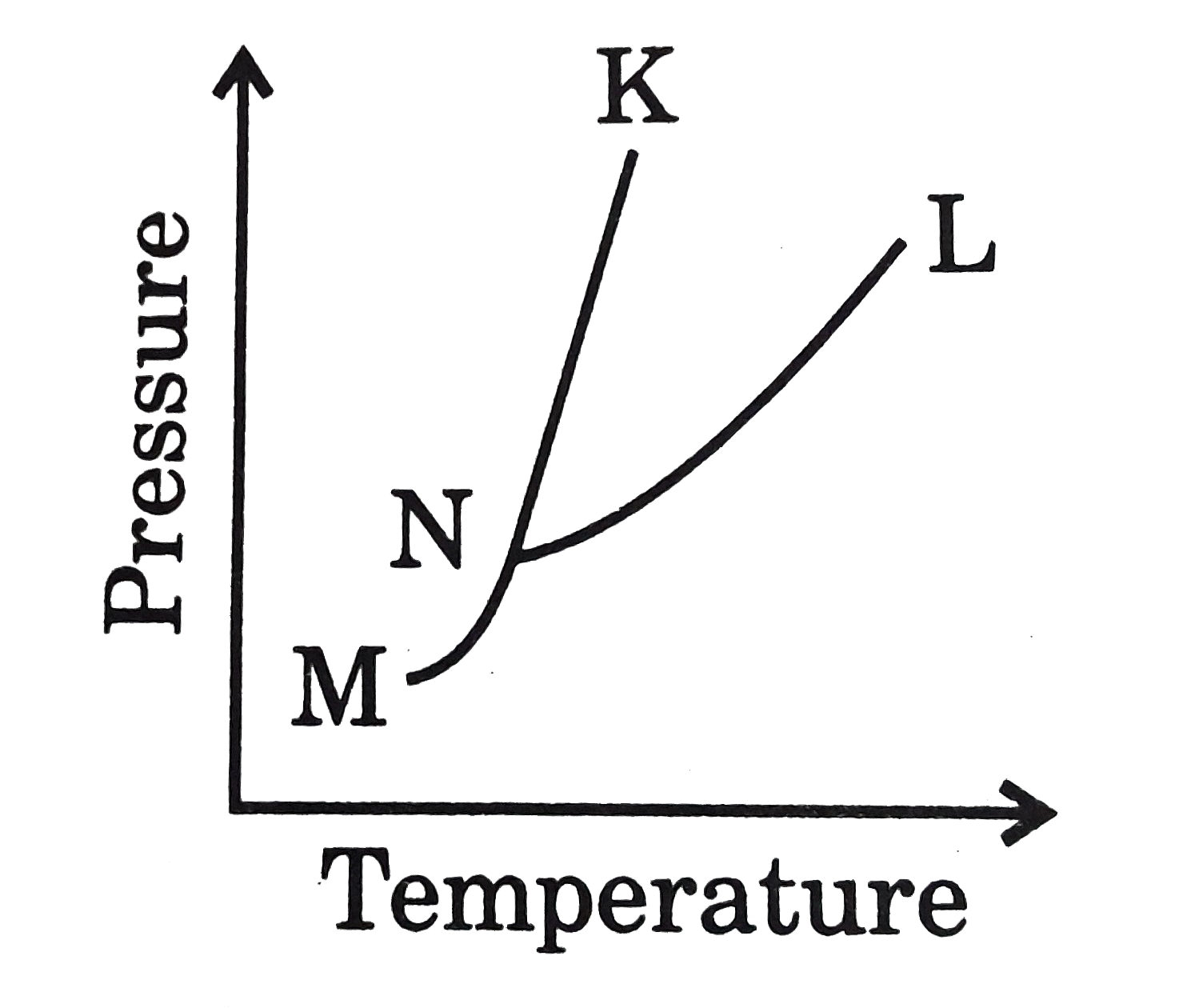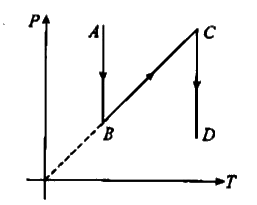The pressure -temperature (P−T) phase diagram shown below corresponds to the
a. Curve of fusion of solids that expand on solidification.
b. Curve of sublimation of solides that directly go over to the vapour phase.

Step by step video & image solution for The pressure -temperature (P-T) phase diagram shown below corresponds to the a. Curve of fusion of solids that expand on solidification. b. Curve of sublimation of solides that directly go over to the vapour phase. by Chemistry experts to help you in doubts & scoring excellent marks in Class 11 exams.
Updated on:21/07/2023Topper's Solved these Questions
- THERMODYNAMICSBOOK - CENGAGE CHEMISTRYCHAPTER - THERMODYNAMICSEXERCISE - Ex 6.3
27 Videos
- THERMODYNAMICSBOOK - CENGAGE CHEMISTRYCHAPTER - THERMODYNAMICSEXERCISE - Ex 6.4
16 Videos
- THERMODYNAMICSBOOK - CENGAGE CHEMISTRYCHAPTER - THERMODYNAMICSEXERCISE - Ex 6.1
26 Videos
- STOICHIOMETRYBOOK - CENGAGE CHEMISTRYCHAPTER - STOICHIOMETRYEXERCISE - Archives Subjective
33 Videos
Similar Questions
Knowledge Check
Assertion : In pressure-temperature (P-T) phase diagram of water, the slope of the melting curve is found to be negative.
Reason : Ice contracts on melting to water.AIf both assertion and reason are true and reason is the correct explanation of assertionBIf both assertion and reason are true but reason is not the correct explanation of assertionCIf assertion is true but reason is falseDIf both assertion and reason are falseAssertion : In pressure-temperature ( P - T ) phase diagram of water, the slope of the melting curve is found to be negative.
Reason : Ice contracts on melting to waterAIf both assertion and reason are true and the reason is the correct explanation of the assertion.BIf both assertion and reason are true but re ason is not the correct explanation of the assertionCIf assertion is true but reason is false.DIf the assertion and reason both are falseAccording to the phase diagram shown, where does a mixture of solid and liquid exist at equilibrium ?
 AAlong line MNBAlong line KNCAlong line LNDIn the region KNL
AAlong line MNBAlong line KNCAlong line LNDIn the region KNL
The pressure at equilibrium over solid A is 50 atm and over solid D is 68 atm if both solid A and D are heated simultaneously .Find: relative number of moles of A ′and B in the vapour phase over a mixture of the solids A and B.
View SolutionTwo liquids A and B form an ideal solution at temperature T. When the total vapour pressure above the solution is 400 torr, the mole fraction of A in the vapour phase is 0.40 and in the liquid phase 0.75. What are the vapour pressure of pure A and pure B at temperature T?
View SolutionEach phase of a material can exits only in certain regions of pressure and temperature . P−T phase diagrams, in which pressure is plotted versus temperature, show the regions corresponding to various phases and phase transformations . P−V diagrams, on the other hand , can be used to study pressure volume relationship at a constant temperature.
If the liquid and gaseous phases of a pure substances are heated together in a closed container, both the temperature and the vapor pressure will increase until a point is reached at which the two phases can no longer be distinguished from one another. The temperature and pressure at which this occurs are called the critical temperature and pressure. Exceeding either of these parameters, by itself ,will cause the gas/liguid phase transition to disappear. if the other variable is then changed as well, while the first variable is maintained above its critical point , a gradual transition will occur between the gaseous and liquid phases, with no clear boundary.(The liquid and solid phases, on the other hand , maintain a distinct boundary at all pressure above the triple point). Shown in figure is a combined P−T phase diagram for material A and B.
_E01_195_Q01.png)
If heat is added to solids A and B , each in a container that is open to the atmosphere :-
View SolutionEach phase of a material can exits only in certain regions of pressure and temperature . P−T phase diagrams, in which pressure is plotted versus temperature, show the regions corresponding to various phases and phase transformations . P−V diagrams, on the other hand , can be used to study pressure volume relationship at a constant temperature.
If the liquid and gaseous phases of a pure substances are heated together in a closed container, both the temperature and the vapor pressure will increase until a point is reached at which the two phases can no longer be distinguished from one another. The temperature and pressure at which this occurs are called the critical temperature and pressure. Exceeding either of these parameters, by itself ,will cause the gas/liguid phase transition to disappear. if the other variable is then changed as well, while the first variable is maintained above its critical point , a gradual transition will occur between the gaseous and liquid phases, with no clear boundary.(The liquid and solid phases, on the other hand , maintain a distinct boundary at all pressure above the triple point). Shown in figure is a combined P−T phase diagram for material A and B.
_E01_196_Q01.png)
Which is true about the substance in figure?
View SolutionThe vapour pressure curves of the same solute in the same solvent are shown below. The curves are parallel to each other and does not intersect. The concentrations of solutions are in order of :

View Solution

